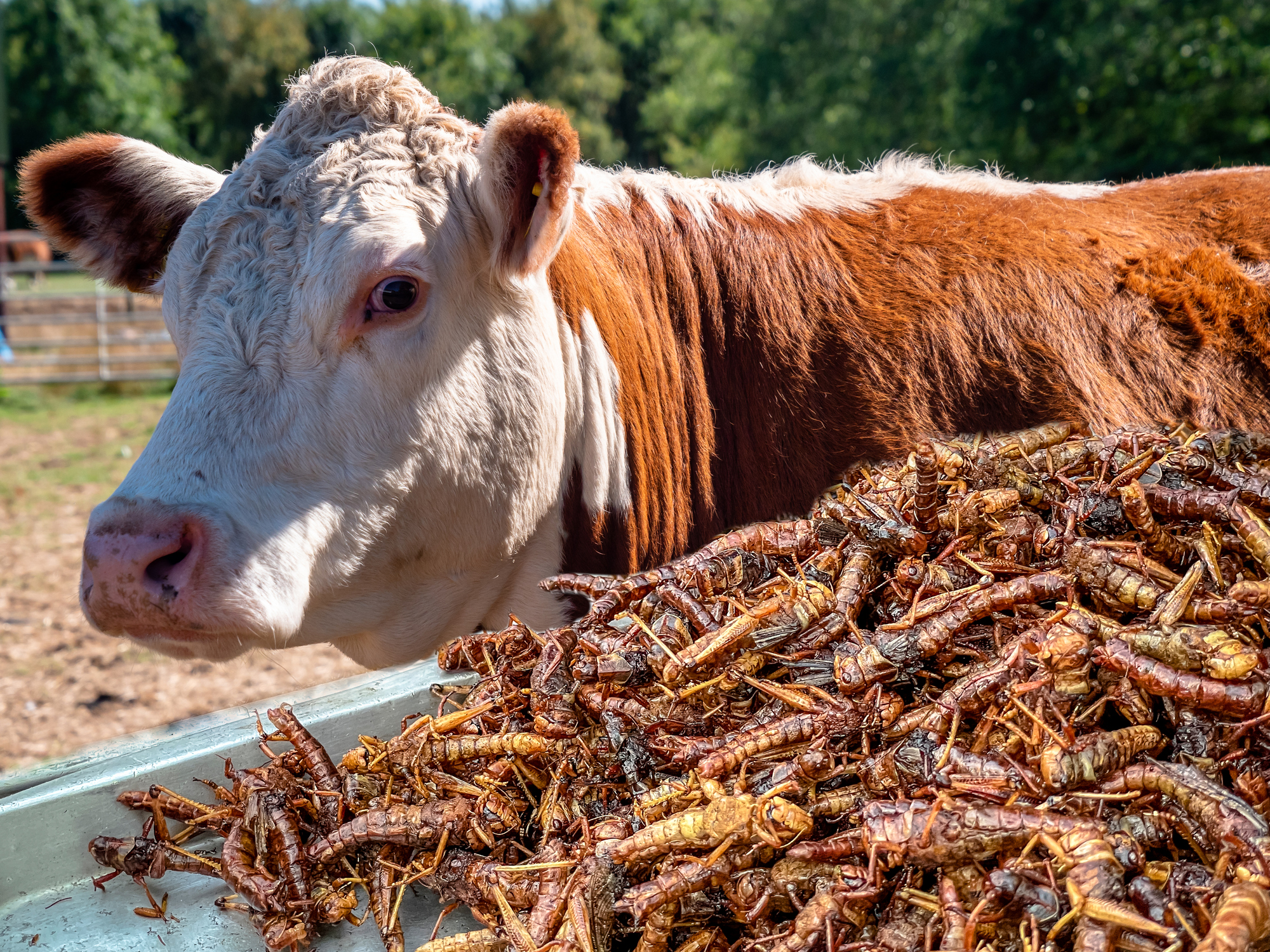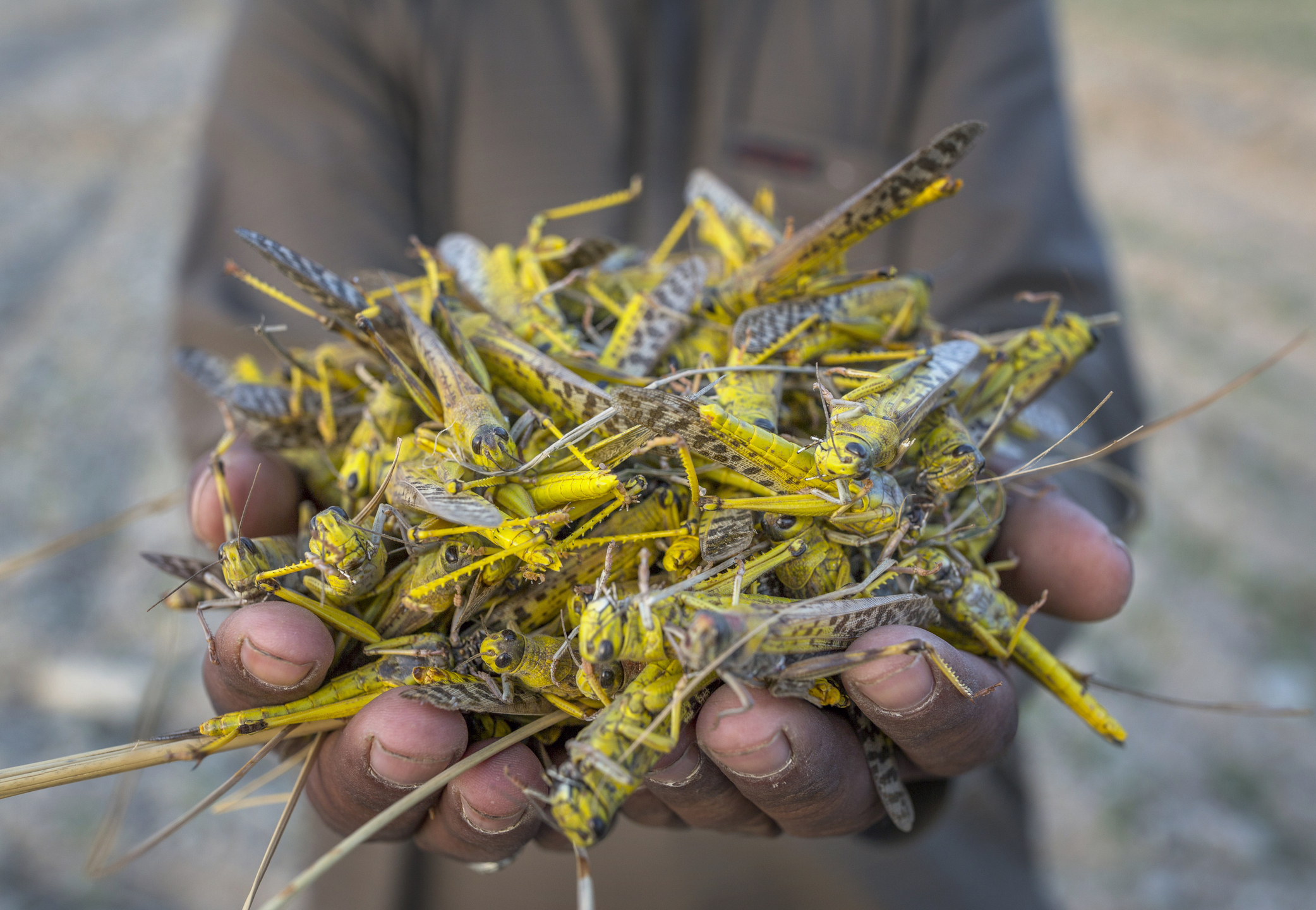Raising animals intensively for food is the biggest source of animal cruelty on the planet. It also happens to be a major emitter of greenhouse gases, responsible for up to 37 percent of global greenhouse gas emissions.
As it is, the livestock sector alone produces more greenhouse gases than the direct emissions from all forms of global transport.
It’s a sobering thought. It’s therefore no surprise that humanity should look elsewhere for sources of protein. But are insects the answer?
As the bug business hots up, there are claims, other than going vegan, that eating insects is the only way to save the planet. Yet insects are already part of the diet of about 2 billion people, especially in tropical regions with high levels of biodiversity. Beetles, butterflies, moths, crickets, grasshoppers, wasps and ants are among the most popular insects consumed with most of them harvested from the wild before being steamed, roasted, smoked, fried or put in a stew.
But in order to overcome Western sensibilities, insects are being farmed then powdered or turned into flour. Insect burgers made from buffalo worms and organic soya are popping up in restaurants and supermarkets.
As the idea of eating insects has taken off, so too has the industry around farming them. In North America and Europe, the creatures are raised under controlled conditions before being killed by freezing or shredding. They are then freeze-dried, packed or pulverised, before being either eaten as they are, or added to burgers, bakery products or snack bars.
But the big question is, are they an efficient source of protein production?
Insects are, without doubt, less resource-intensive than traditional farmed animals, which is much more a reflection of how inefficient cattle, chickens, and pigs are at converting grain into animal protein than a plus for farming insects.
Insects are increasingly intensively farmed, where they are commonly reared by feeding them on cereals and soya that could be feeding people.

However, it’s important to realise that crickets and other bugs fed on crops are not a "free lunch." The ‘feed conversion ratio’ - the amount of feed needed to be put in compared with the amount of food produced - for insects means that they waste more food than they produce. Black soldier flies and Argentinian cockroaches are among the most efficient insect species, with food conversion ratios of between 1.4 and 2.7 to one, which means that even they eat more food than they produce.
If our goal is truly to feed the world, then the obvious conclusion is that it’s far better to use croplands to feed people directly than to feed farmed insects.
Farming insects is simply part of the same old story – a system that wastes more food than it actually produces.
Added to which, the consumption of insects is not without safety concerns; they have been shown to accumulate hazardous chemical pesticides, heavy metals, pathogens and allergens.
Feeding the World
Protagonists claim that insects are necessary to feed a growing population – they are not: globally, we already produce enough to feed twice the current human population.
The main reason for the ‘not enough’ illusion is the amount lost due to food waste and the quantity of cereals and soya fed to livestock, whether chickens, cows or crickets. 36 percent of all the edible crop harvest, enough calories to sustain 4 billion people, is used for animal feed.
Just as factory farming is wasteful and inefficient, so too is the large-scale production of crop-fed insects.
The rationale for industrial insect farming becomes even more tenuous when the purpose is to feed livestock. Perfectly good crops are fed to insects, which are then fed to pigs, chickens and fish.
The industrial production of animals – insects or otherwise – relies on the industrial production of cereals, which usually means spraying the countryside with insecticides.
So, to produce one set of insects we wipe out another, impoverishing an ecosystem and leaving the songbirds and other creatures that rely on wild insects for food to go hungry.
Insect Sentience and Welfare
The question of whether farming insects is ethical from an animal welfare perspective is also important.
Scientific evidence suggests that insects have the capacity to suffer. They have receptors that sense heat or injury. Honeybees have been shown to have the capacity for optimism and pessimism. Ants teach each other where to go for food. When Matabele ants are injured during raids on termite colonies, they are carried home and their wounds licked to prevent infection.
But the most intriguing behaviour by ants is their response to the ‘mirror test’. If a blue dot is painted on an ant’s head, they see it in a mirror and will try to clean it off. Such a response is regarded by scientists as proof of self-recognition; that the ants can see themselves.
It offers further evidence that insects should be treated with compassion. When considering the welfare of insects, the key thing is that they are allowed to fulfill their natural behaviours and in ways that suit their needs.
Insectageddon
In recent decades, industrial farming has become the norm across much of our countryside. Farmed animals have been taken off the land and put into cages, crates or crowded barns. They are fed on intensively grown crops sprayed with chemical pesticides that wipe out vast populations of wild insects, indiscriminately killing benign species as well as those considered ‘pests’.
The industrialisation of the countryside has led to a dramatic drop in the number of wild insects in Britain, Europe, America and many other parts of the world, leading some to talk about the prospect of ‘Insectageddon’.
An international team of scientists reported that up to half a million insect species have become extinct in recent times, with half a million more likely to in the coming decades. They blame loss of habitat and the use of harmful agri-substances, as well as climate change and the spread of invasive species. Some scientists believe that imminent decline could cause the extinction of 40 percent of the world’s insect species.
Without insects, the world would be a very different place.
They are essential for pollination of many crop plants and the decomposition of organic matter in the soil, as well as feeding the web of life on which we all depend.
Without bees, our local supermarket shelves would look very different. There would be no tomatoes, chili peppers, zucchini, blueberries, raspberries, runner beans or cucumbers – the list is endless.
Making peace with insects is a prerequisite if we want a sustainable future. We must use beneficial insects to tackle those that are considered ‘pests’ and use the secrets of the ecosystem to keep things in balance. This is an integral part of nature-friendly regenerative farming, where crops and farmed animals are kept more naturally without the use of lots of insect-killing chemical pesticides.
Rather than repeating the mistakes of the past with wasteful industrial insect farming, we should be moving to a new future-fit farming future based on regenerating the countryside.
There is increasing recognition that farming has to change, and a growing band of organic and regenerative farmers are already making space for insects among their harvests. I applaud them. It is their efforts, not the latest insect farm, that should be receiving our appreciation. For their way is the real way to feed the world and save the planet.
More Must-Reads from TIME
- Cybersecurity Experts Are Sounding the Alarm on DOGE
- Meet the 2025 Women of the Year
- The Harsh Truth About Disability Inclusion
- Why Do More Young Adults Have Cancer?
- Colman Domingo Leads With Radical Love
- How to Get Better at Doing Things Alone
- Michelle Zauner Stares Down the Darkness
Contact us at letters@time.com
